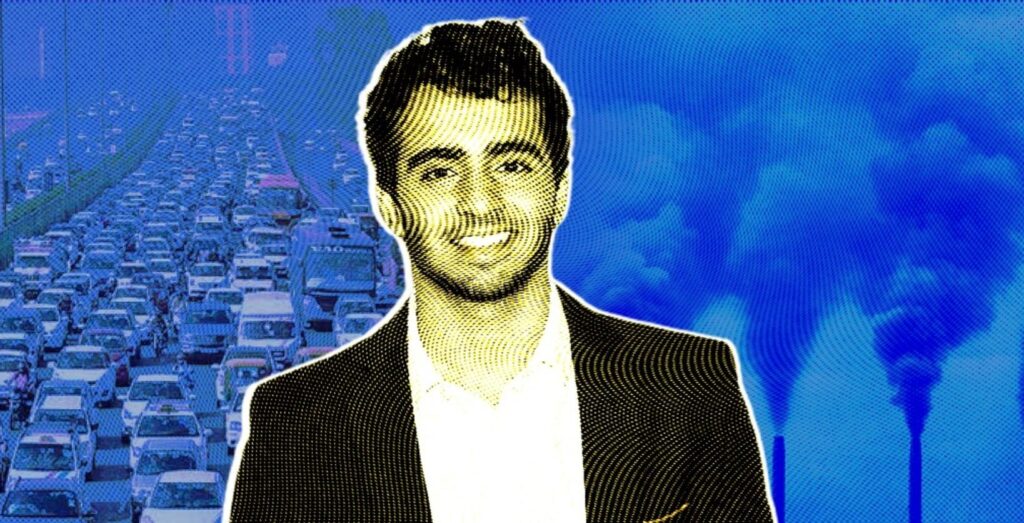Angad Daryani’s “Praan” (which translates into life in English) is trying out a novel solution to beat urban pollution that has become synonymous with Indian cities like Delhi and Mumbai.
Using a groundbreaking filter-less air purifier, Praan’s future-ready tech could change the way we perceive clean air. With the ability to create urban bubbles of clean air, Praan’s purifiers are designed for public spaces to help you maximise your praan!
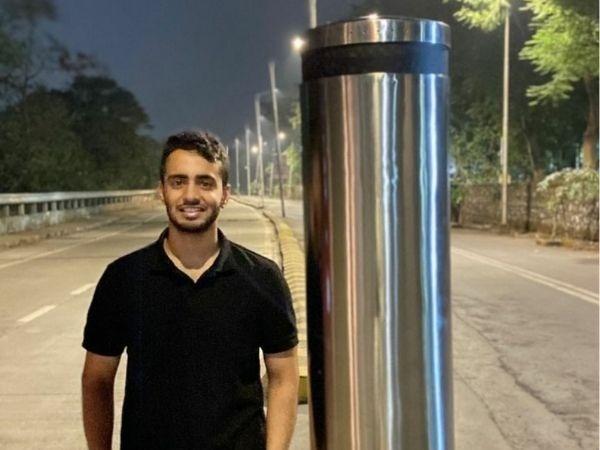
Creating safe breathing bubbles
Daryani wants to deploy the air purification system across places of social value where attendance is inevitable, including schools, hospitals, and industrial areas. Employing the powers of deep tech solutions, Praan could help create safe breathing zones in toxic cities. While the purifiers do not create an all-encompassing bubble to support entire cities, its deployment could help alleviate the stress on communities that live in areas with high pollution levels within polluted cities.

23-year-old Angad Daryani started building the company when he was just 14. After dropping out of school and continuing his education from home, Daryani went on to study at tech biggies like University of Massachusetts, Amherst and Georgia Institute of Technology. Since 2008, Daryani has been building an array of things, ranging from automated gardening systems to homemade 3D printers, and now filter-less air purifiers.
Praan came to be in Daryani’s second year at Georgia Tech. “When our parents grew up, their future seemed exciting,” Daryani told Indiatimes, explaining how things are not the same for the generations that followed. “When we grew up, we always read about animals going extinct, or water and air pollution.” Praan’s Angad Daryani told us how his asthma would force him to move to hilly regions during Diwali season, later inspiring him to set up Praan.
How Praan is providing “clean air to people where they are”
Moving to the United States came with its own perks for Daryani. For starters, the air was more breathable. “I can’t expect my friends and family to do the same because that would mean displacing them,” Daryani told us. “So why can’t we try to solve the problem where the people are?”
Praan isn’t trying to “clean up the atmosphere.” Instead, it creates localised hotspots of clean air in places that require it the most. “We’re trying to provide cleaner air to people where they are.”
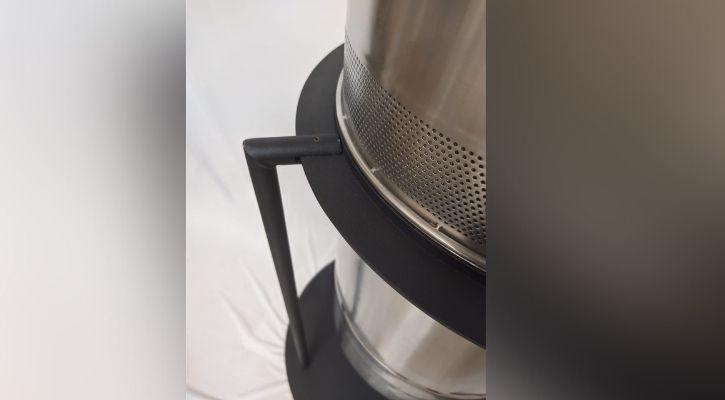
While radical solutions like capturing all carbon and pollutants in the world sound enticing, Daryani believes one “can’t really capture it all” owing to different factors that now contribute to pollution, ranging from degrading infrastructure, construction, to even the paint on our buildings!
The most groundbreaking facet of Praan’s purifiers is that they are filter-less. “Filter-less technology took three years or more to prototype and develop,” Daryani said.
Taking a “software-based cluster approach,” Praan deploys “a cluster of devices tailored to the wind and pollution levels on that property.” This is primarily because all buildings/properties have unique airflow dynamics due to their architecture and based on exposure to different kinds of pollutants.
These differences in terms of exposure to pollution are fed to Praan’s software, enabling the team to curate peculiar solutions for different environments.
When Daryani’s attempts to rope in the government did not bear any amicable results, he took it upon himself to incentivise the tech. Referring to Tesla, Daryani explained how the electric car makers didn’t “build the best electric car. They built the best car that happened to be electric.”
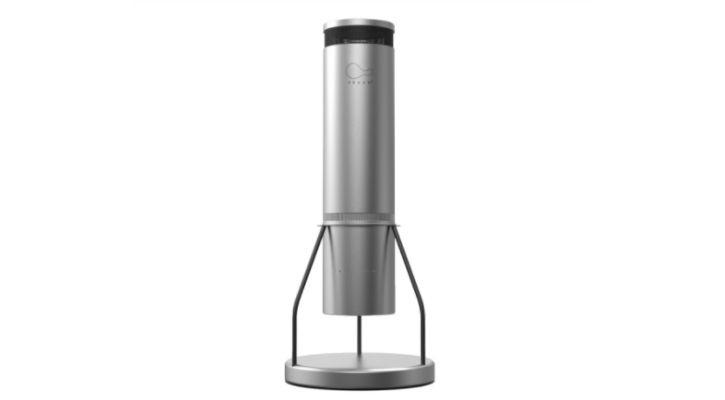
Combining climate change with public health
Praan set out to marry climate change with public health using software that complements Praan’s game-changing hardware. Explaining how the quality of air we breathe, the amount of sunlight we receive, and the food we eat affects our health, Daryani highlighted the need for Praan’s team to create a device that solves people’s problems instead of “just talking about problems through graphs.”
Besides focusing on particulate matter capture, (the biggest constituent of air pollution) Praan is working on direct capture of CO2. Praan’s purifiers work on “quantum capture” wherein polluted air is drawn in from fans inside the device, supported by baffled structures “inspired by F1 cars.”
“The idea is that can you create enough pressure difference so that even if the fan was off and wind was flowing through, it would be drawn inwards.” Essentially, Praan’s purifiers pull in more air with lesser energy.
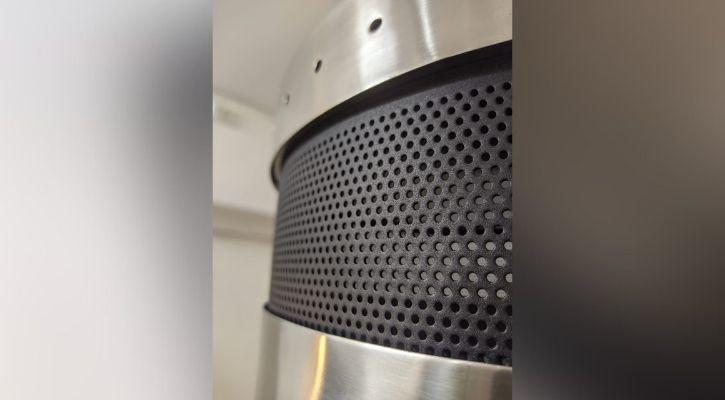
Once sucked in, the polluted air goes through 80 rows of emitters that throw out “both positive and negative charges on to these polutants.” “It’s not an ioniser because we don’t break down the air,” Daryani added.
“As these particles are getting charged, they’re sticking together, and as they go through these 80 rows of emitters, they get heavier and heavier, and then they settle in the collection chamber.” Once captured, the pollutants settle quickly, for there is no energy for them to continue moving. “The velocity of air in the collection chamber is 0.” The airflow is designed in such a way that the velocity of air in the collection chamber remains 0.
Like all-things-tech, Praan’s designs are also built to complement future tweaks in the software. For instance, Daryani told us that Praan’s purifiers are being trained to adjust to the cleaner environment to “turn on and off automatically.” To ensure the device has a long life span, Praan made all purifiers with stainless steel bodies. While the device itself may be pricey, its cost-efficiency lies in the “zero maintenance cost.”
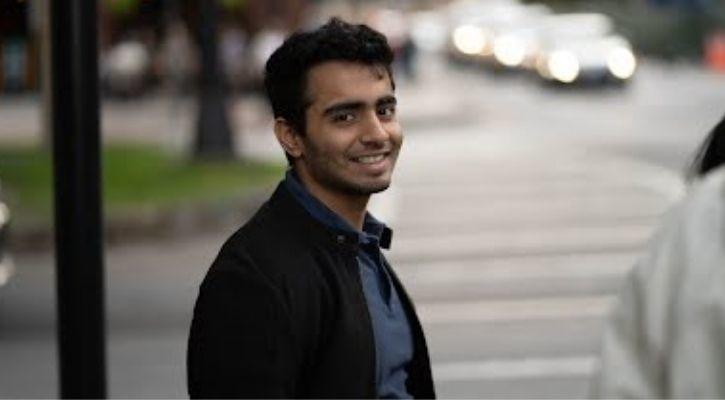
Praan wants to make air pollution visible
A lot of Praan’s strength lies in its ability to visibilise pollutants in real time. “The visual proof is that you can see the particle is collected in the collection chamber and that solves the perception issue people have in your home air purifier,” Daryani told us. The problem with filter-heavy purification devices? “There’s microbes and pollutants stuck onto it, and this filter goes into landfills, which ends up back into the airstream or water. So it’s quite the futile exercise.”
The collection chamber in each purification device needs to be emptied every two to six months. This particulate matter is then shipped off to a different company – Carbon Craft Design. “They’ll mix this particulate matter along with other elements used to make flooring tiles.”
It gets better! “The tiles are cured using CO2, which is also something we capture. So you’re packing away CO2 also for 2200 years as you make long long lasting tiles.”
Air pollution can’t be fixed with a one-off solution
Daryani has successfully built a multi-national company, with people from 72 cities around the globe – representing the true scale of people who could be affected by pollution. “Air pollution and climate change are very nuanced problems, but people have a very polarised approach towards it… like if we move to electric cars, air pollution will disappear.”
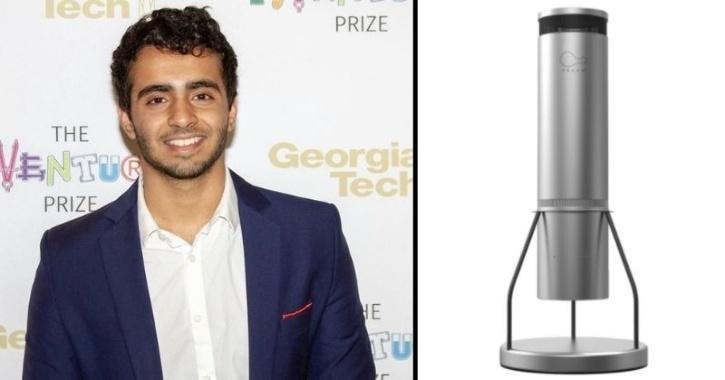
“Mining of lithium mining and making of lithium ion batteries is detrimental to the environment,” Daryani said while adding how most Indian cars get battery packs made in China with no control over the legitimacy of the components.
Alluding to Praan’s experience while trying to score chips during the pandemic-driven shortage, Daryani claimed Praan received substandard components. “If this is happening with small companies like us, Can you imagine what’s happening inside millions of battery packs that were imported?”
Sure, Praan and Daryani want to clean our polluted cities by setting up clean air bubbles. While climate radicals may dismiss this as a short-sighted solution, it has positioned itself as a viable alternative in the absence of state-backed large-scale initiatives to clean our air. With Praan, Daryani wants “people to visualise air pollution” by building “intuition and irritation.”

Why did he return to India? “I was very naive,” Daryani joked. After rejecting job offers from top tier Silicon Valley companies, Daryani said “India platform is great for all climate companies.” And if you look at pollution tracking websites, surely there can’t be any greater proving ground for Angad Daryani’s Praan than India right now.
Article Credit: IndiaTimes
